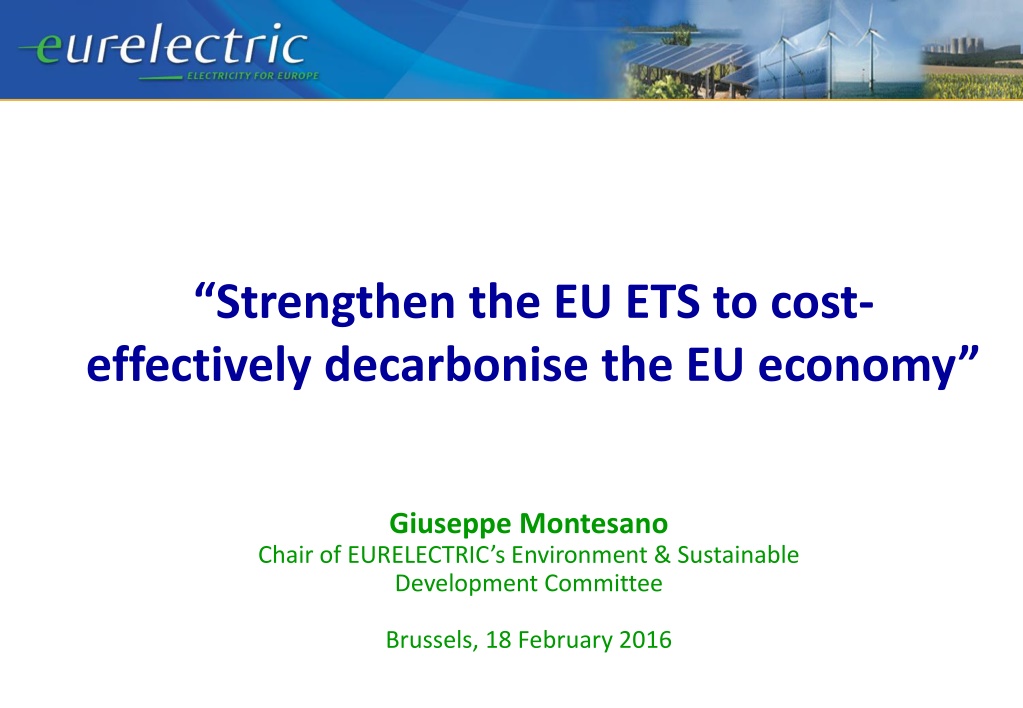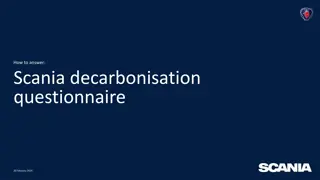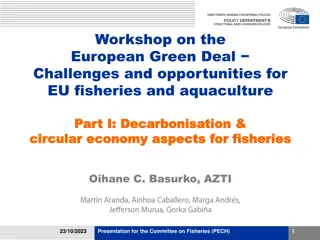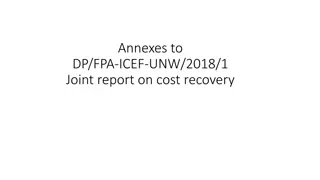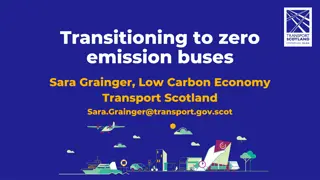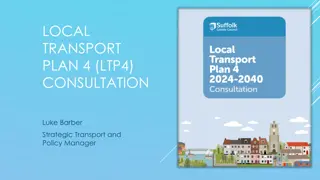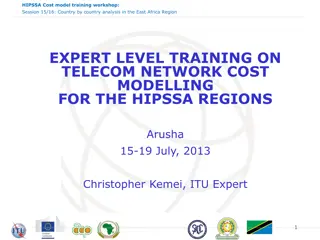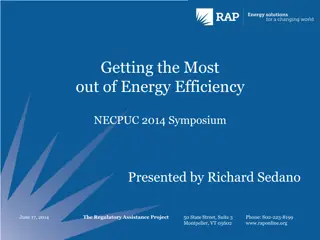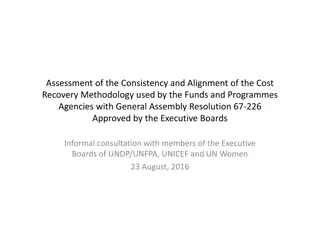Strengthening the EU ETS for Cost-Effective Decarbonisation
In order to decarbonise the EU economy efficiently, there is a need to reinforce the EU ETS, ensuring a technology-neutral and market-based approach. By strengthening the signal of the EU ETS, it can drive investments in renewable energy sources within the electricity sector. Implementing a coherent and consistent policy approach is crucial to achieving the desired decarbonisation goals. The EU ETS architecture should be transparent and robust, with specific provisions to address carbon leakage risks and promote predictability. Electrification of non-ETS sectors is vital for achieving decarbonisation targets in transportation, heating, and cooling sectors.
Download Presentation

Please find below an Image/Link to download the presentation.
The content on the website is provided AS IS for your information and personal use only. It may not be sold, licensed, or shared on other websites without obtaining consent from the author. Download presentation by click this link. If you encounter any issues during the download, it is possible that the publisher has removed the file from their server.
E N D
Presentation Transcript
Strengthen the EU ETS to cost- effectively decarbonise the EU economy Giuseppe Montesano Chair of EURELECTRIC s Environment & Sustainable Development Committee Brussels, 18 February 2016
The context: all new capacity is green with continued capacity growth in a stagnating market The declining pace of RES capacity additions is accompanied by a decommissioning and mothballing of coal and gas capacities. Not only the depressed state of wholesale markets, but also the depressed state of the carbon market is undermining future investments. Includes data from 24 European countries: Belgium, Bulgaria, Croatia, Cyprus, Estonia, Finland, France, Germany, Greece, Hungary, Ireland, Iceland, Lithuania, Luxembourg, Malta, Netherlands, Norway, Portugal, Serbia, Spain, Sweden, Slovenia, Turkey and the United Kingdom Source: EURELECTRIC
A strengthened ETS to ensure cost-effective, technology-neutral and market-based delivery of the decarbonisation agenda STRENGTHEN THE SIGNAL - EU ETS should be the main driver for RES investments in the electricity sector. Strengthening the EU ETS is therefore a no-regret option. With a reinforced carbon price signal and an accelerated cap reduction additional measures to promote RES can be minimised within the ETS sectors. A EUROPEAN APPROACH - A non-harmonised national approach to reduce GHG emissions is counter-productive leading to significantly higher overall energy and decarbonisation costs. It will not only further distort, but also fragment the internal energy market. A CONSISTENCT POLICY APPROACH - Adopt a coherent approach in the targets and accompanying measures. Assess the interlinkages between the EU ETS and other support mechanisms.
EU ETS should be built around strong & transparent architecture Linear Reduction Factor of 2.2% In line with the 2050 decarbonisation perspective Explicit definition of share of auctioning at 57% Predictability and certainty on amount of allowances at beginning of Phase IV Continuation of free allocation to industrial sectors at risk of carbon leakage Periodically revised to take account economic and technological developments If subsequent to the Paris Agreement, the EU decides to go beyond a 40% GHG reduction target, there is potential (surplus of allowances) to achieve further ambition. However the non-ETS sectors should contribute in a balanced manner to any increase in ambition.
Electrification of non-ETS sectors enables decarbonisation of transport, heating and cooling Transportation case based on average electricity mix: CO2 emissions already lower than the EU target Targets compared to 1990 levels Source: EC Roadmap Source: EURELECTRIC As electricity becomes increasingly low carbon (more generation means no additional emissions because of the ETS cap), replacing fossil based systems with electric technologies provides a cost- effective way to decarbonise
EURELECTRICs Priorities and Policy Recommendations PROMOTING LOW CARBON INVESTMENTS Renewables and decentralised technology investments driven by market signals and supported by a strong EU ETS. STRENGTHENING THE EU ETS The main instrument to achieve greenhouse gas emission reductions. DECARBONISING THE NON-ETS Revealing electricity as the key energy carrier to decarbonise the non-ETS sectors. ENSURING CONSISTENCY Adopting a coherent approach in the targets and measures to cost- effectively achieve the EU climate and energy policy objectives. EFFECTIVE GOVERNANCE Ensuring achievement of the EU climate and energy policy targets. IMPROVING ENERGY EFFICIENCY Cost-efficient and market-based policy instruments to leverage the role of decarbonised electricity.
Thank you for your attention For further information: http://www.eurelectric.org
